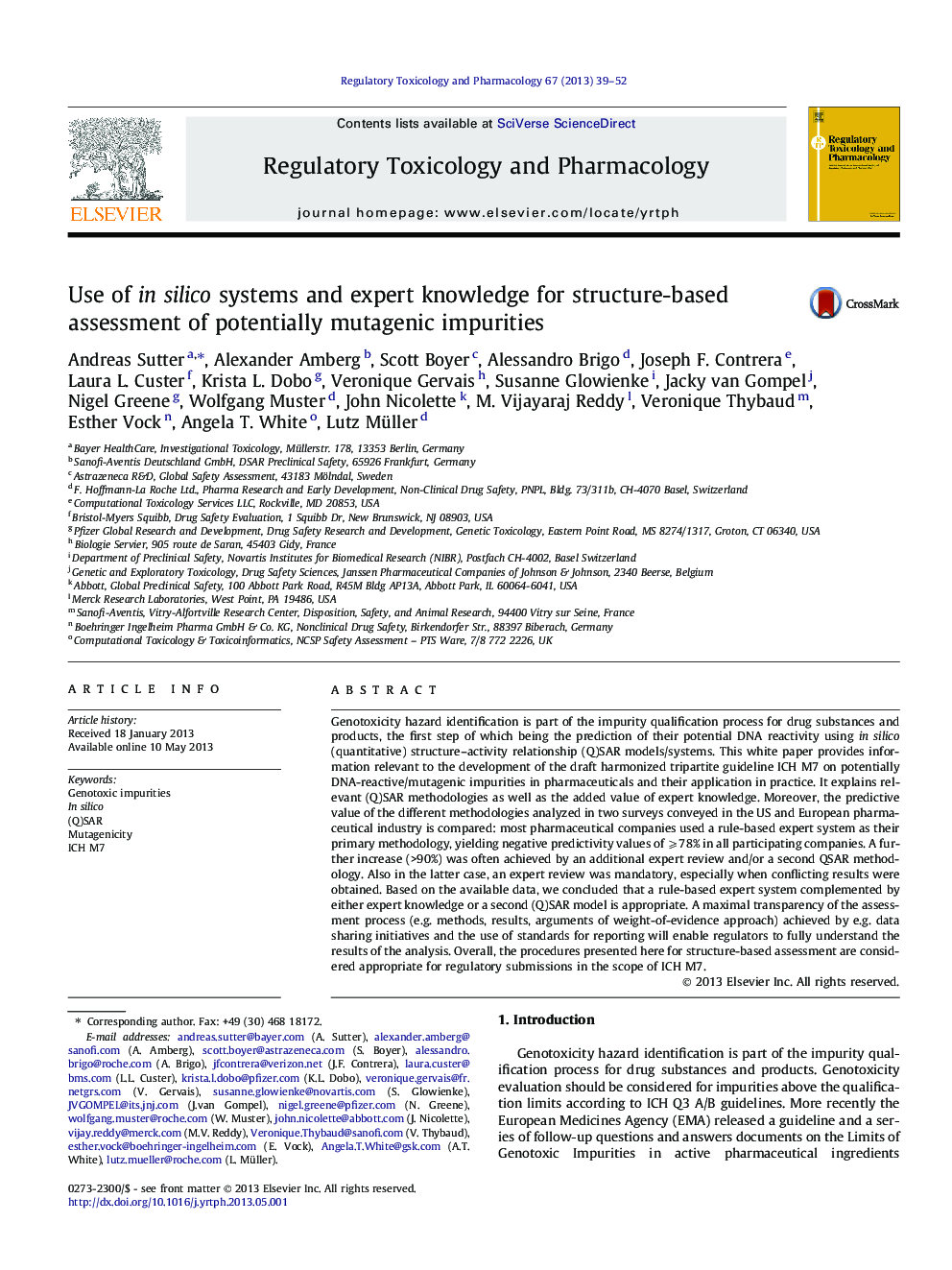| کد مقاله | کد نشریه | سال انتشار | مقاله انگلیسی | نسخه تمام متن |
|---|---|---|---|---|
| 5857506 | 1132011 | 2013 | 14 صفحه PDF | دانلود رایگان |
- Application of ICH M7 recommendations to structure-based assessements.
- Place/use of in silico methodologies (rule-based and (Q)SAR).
- Clear definition and scope of expert knowledge.
- Current industry practice in major EFPIA and PhRMA companies.
- Industry surveys comparing methodologies complementing the rule-based system.
Genotoxicity hazard identification is part of the impurity qualification process for drug substances and products, the first step of which being the prediction of their potential DNA reactivity using in silico (quantitative) structure-activity relationship (Q)SAR models/systems. This white paper provides information relevant to the development of the draft harmonized tripartite guideline ICH M7 on potentially DNA-reactive/mutagenic impurities in pharmaceuticals and their application in practice. It explains relevant (Q)SAR methodologies as well as the added value of expert knowledge. Moreover, the predictive value of the different methodologies analyzed in two surveys conveyed in the US and European pharmaceutical industry is compared: most pharmaceutical companies used a rule-based expert system as their primary methodology, yielding negative predictivity values of ⩾78% in all participating companies. A further increase (>90%) was often achieved by an additional expert review and/or a second QSAR methodology. Also in the latter case, an expert review was mandatory, especially when conflicting results were obtained. Based on the available data, we concluded that a rule-based expert system complemented by either expert knowledge or a second (Q)SAR model is appropriate. A maximal transparency of the assessment process (e.g. methods, results, arguments of weight-of-evidence approach) achieved by e.g. data sharing initiatives and the use of standards for reporting will enable regulators to fully understand the results of the analysis. Overall, the procedures presented here for structure-based assessment are considered appropriate for regulatory submissions in the scope of ICH M7.
Journal: Regulatory Toxicology and Pharmacology - Volume 67, Issue 1, October 2013, Pages 39-52
